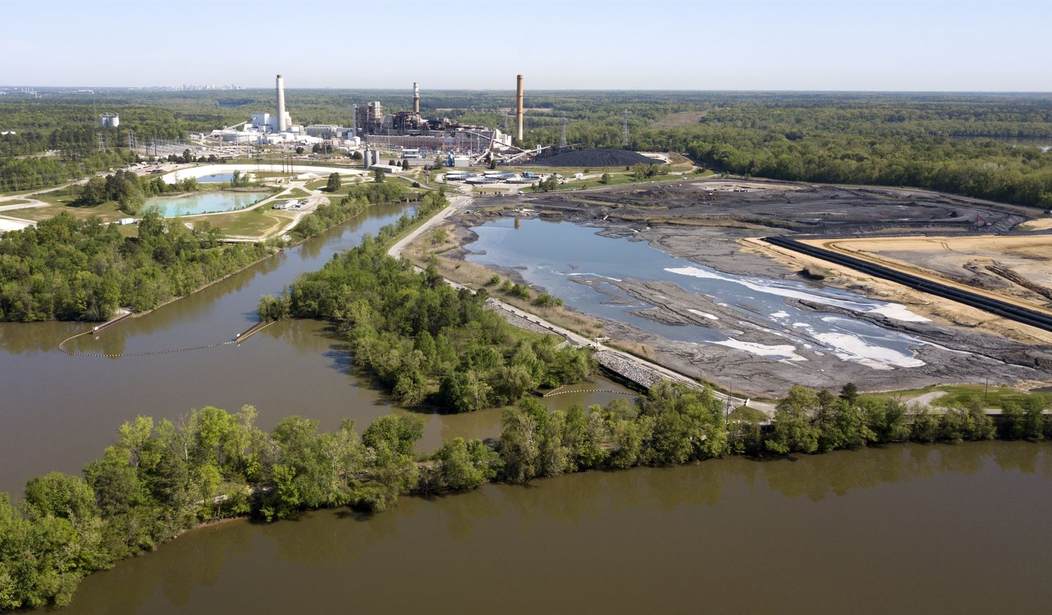While America chases windmill dreams and solar powered nightmares the rest of the world is running on coal. That’s good news for the USA because we just happen to have the largest coal reserves in the world.
Worldwide coal demand is surging and it appears the reports of the American coal industry’s death were greatly exaggerated.
Contrary to the liberal narrative of a global downturn, the U.S. coal industry has been making a comeback under the Trump administration. According to the Energy Information Administration’s newest numbers, American coal exports rose 61% in 2017. This resurgence is being fueled largely by growing demand in Asia.
With coal demand in South and East Asia set to grow steadily in the coming decades and the administration positioning itself as a strong advocate of America’s world-leading oil, coal, and gas industries, environmentalist groups are bemoaning a “climate catastrophe” in the making.
President Trump obviously doesn’t buy those warnings. He could, however, respond in a way that helps the U.S. economy and protects jobs in the energy sector: fast track the development of carbon capture technologies and start exporting those alongside American coal.
Asia isn’t betting on renewables
Major Asian economies like Japan, South Korea and India have growing appetites for coal, and Asia accounts for 85% of new coal power developmentin the world’s top 20 coal producing countries.
Coal-fired generating capacity in India has more than doubled in recent years to meet skyrocketing demand. A large portion of India’s new coal-fired power plants need higher quality coal, which has helped make India the largest importerof American steam coal.
Japan and South Korea aren’t far behind. Japan depends on coal imports for more than 90% of its energy needs and has fired up eight new coal power plantsin the past two years. They are planning to build 36 more over the next ten years. Last month, the government adopted a national energy plan that would see coal provide 26% of Japan's electricity in 2030. Coal has taken nuclear’s place as the backbone of the Japanese energy sector. All 54 of the country’s nuclear reactors were shut down after the Fukushima disaster. Only seven have restarted.
Recommended
Then there’s Southeast Asia, where the countries of the Association of Southeast Asian Nations (ASEAN for short) need to get more than doubletheir current power capacity online between now and 2035 to keep up with demand. The ASEAN countries have been perfectly clear in saying that they need coal to prevent energy poverty from throttling their breakneck economic growth. The International Energy Agency forecasts the region will become a net coal importer by 2040. Last year, Vietnam passed Thailand as the second-largest coal consumerin the region. Over the next two decades, it will become ASEAN’s largest coal importer.
Even in China, where the government has canceled plans for more than 100 new coal plants, Chinese energy planners realize they cannot relinquish coal altogether. The country still remains dependent on coal, accounting for roughly 60%of China’s electricity production.
The commitment to coal throughout Asia is revving up the American coal industry, and the administration is doing its best to make sure that growth stays on track. The export surge to Asia has plenty of knock-on effects for the economy. So far, it has helped to bolster revenues for coal-carrying railroadssuch as CSX, BNSF and Norfolk Southern. It has also increased business at U.S. ports in Marylandand Virginia. With the U.S. sitting on the world’s largest reserves of low-cost, high quality coal, the sky is the limit when it comes to powering Asian growth. As Rudy Giuliani once famously said: we're the Saudi Arabia of coal.
Clean technology is part of the solution
Our clean coal technology can be just as lucrative as the coal itself and help keep that Asian air fresh. Governments and industry are increasingly looking to clean coal technologies that curb the release of harmful carbon dioxide, sulphur dioxide and nitrogen oxides into the atmosphere. These include pollution control technology, high efficiency low emission technology, and carbon capture and storage.
The U.S. shouldn’t just be the globe’s supplier of coal. It should also take point on exporting the technologies the world needs to use that coal as cleanly as possible. In that vein, President Trump has put forward an alliance of countries using clean coal that would naturally bring together with the U.S. with our customers in South Asia and East Asia. The Rolls-Royce of clean coal technologies is carbon capture and storage, a family of technologies that capture carbon dioxide before it's released into the atmosphere and buries it underground.
Highly efficient coal plants are also key – namely the supercritical, ultra-supercritical and coal gasification technologies that China and India are increasingly turning to in order to lower their overall emissions. China is the largest technology supplier to India, and is helping buildBangladesh’s first clean coal plant.
Since Fukushima, Japan too has raced aheadin clean coal technology. Japan now has the world’s most efficient coal-fired plant and will soon receive a boost from the Trump administration through the Japan-United States Strategic Energy Partnership. That deal features a joint commitment by Tokyo and Washington to promote high-efficiency, low-emission deployment throughout Southeast Asia.
Keeping up with our competitors means promoting carbon capture and other clean coal technologies at home. Incentives help: the recent extension and expansion of a U.S. tax credit for carbon capture has people considering carbon capture technologies for power plants. Because the program is designed as a carrot rather than a stick (like a carbon tax), the most polluting plants have the most incentive to retrofit.
By perfecting carbon capture technologies in America, we can sell them to countries like India and Vietnam alongside our coal. Mitigating coal emissions isn’t just a goodwill gesture towards environmentalists – it’s a way to help Asia’s economies generate electricity and help the U.S. economy generate even morejobs.























Join the conversation as a VIP Member